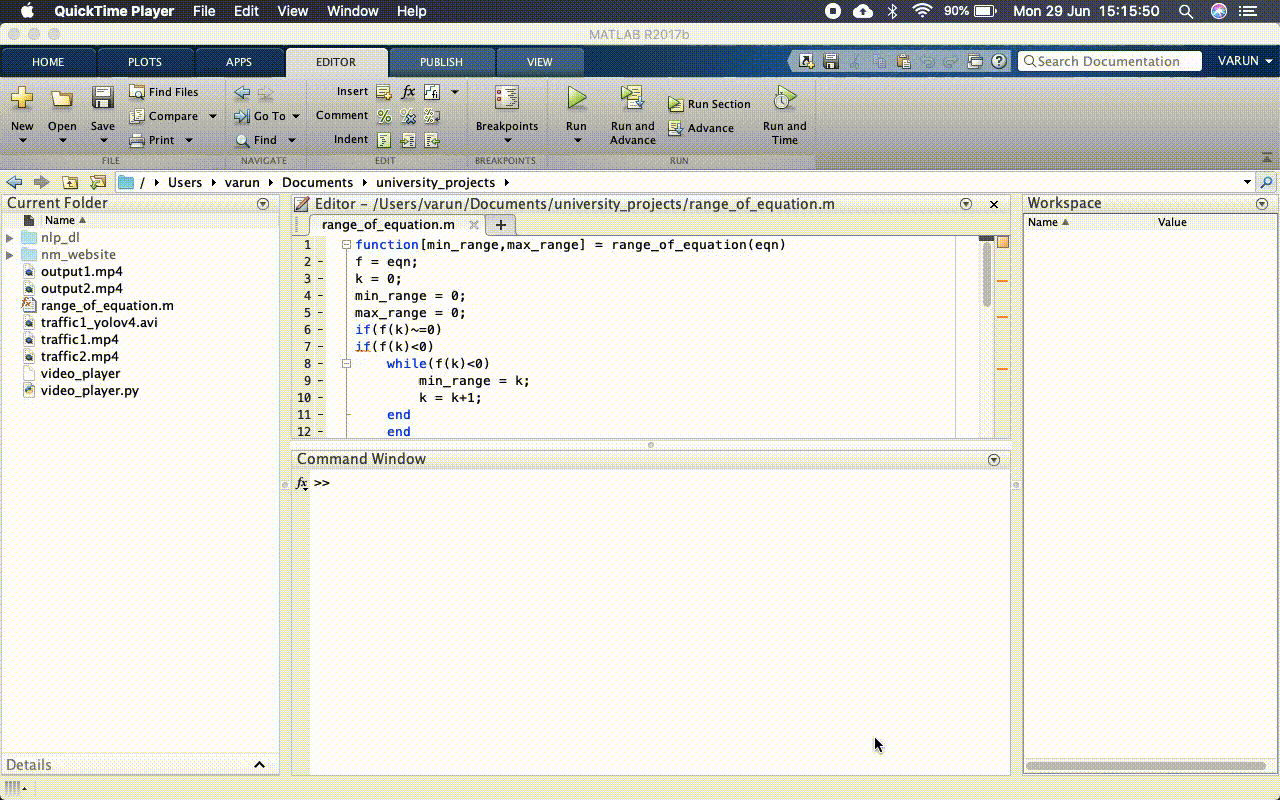Numerical Analysis
Introduction to Solution of Algebraic and Transcedental Equations
During the computation of Scientific and Engineering Problems, a recursive problem is to find the zero’s of equations of the form
If the equation is of lower order then algebraic formulae are available to determine zeros.
Example:
Equation:
Solution:
From Formula:
Now, let’s imagine to solve the following equations:
So, as of now there is no definite approach to solve these kind of equations through formulae. And in most of the times we are required to solve these kind of equations in the streams of science and engineering.
Here comes the approximate approach called Numerical Methods to solve any kind of equations.
The Numerical Analysis is a wide concept dealing with basic equation’s solution to integral solution.
Starting with root finding algorithms, It is divided into two categories:
- Bracketing Method
- Open Method
Bracketing Method requires range of equation, range here refers to lower and upper limit of equation.
Say a is the lower limit and b is the upper limit of the equation then it must satisfy the following equation.
Let’s Begin with the problem solving
Initially the Bracketing Methods problem solving requires the range of equation let’s say the range as (a,b)
To satisfy the condition:
There are two approaches:
Mathematically one can start taking values and find the range,
Example:
For the equation:
Therefore (a,b) = (3,5) and root lies between this range. One can note that at x = 4 there is one zero of equation. In this example the root is real integer and hence f(x) = 0 at x = 4. But it varies with different equations, Let’s infer with the programming.
The programming snippets are provided which support MATLAB/ OCTAVE and Python3
MATLAB SCRIPT
% MATLAB/ OCTAVE snippet to determine range of equation
function[min_range,max_range] = range_of_equation(eqn)
f = eqn;
k = 0;
min_range = 0;
max_range = 0;
if(f(k)~=0)
if(f(k)<0)
while(f(k)<0)
min_range = k;
k = k+1;
end
end
while(1)
if(f(k)>0)
max_range = k;
k = k+1;
break;
end
end
k = 0;
if(f(k)>0)
while(f(k)>0)
min_range = k;
k = k+1;
end
while(1)
if(f(k)<0)
max_range = k;
k = k+1;
break;
end
end
end
end
end
MATLAB DEMO

PYTHON3 SCRIPT
# Python3 Snippet to determine range of equation
def f(x):
return 11*x**11 - 1 #update corresponding equation here
def range_of_equation():
min_range = 0
max_range = 0
k = 0
if(f(k)!=0):
if(f(k)<0):
while(f(k)<0):
min_range = k
k = k+1
while(1):
if(f(k)>0):
max_range = k
k = k+1
break
k = 0
if(f(k)>0):
while(f(k)>0):
min_range = k
k = k+1
while(1):
if(f(k)<0):
max_range = k
k = k+1
break
return min_range,max_range
print(range_of_equation())
Python Demo
